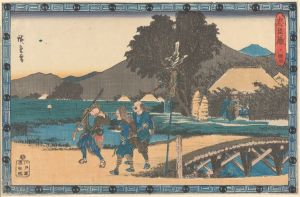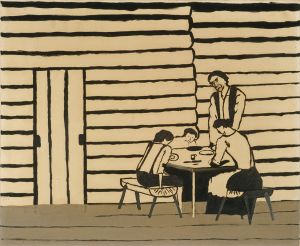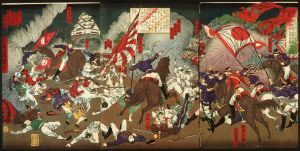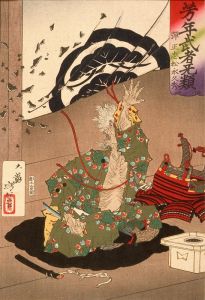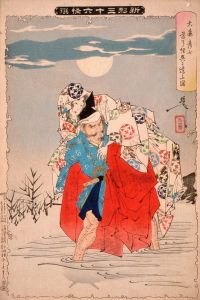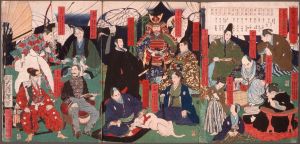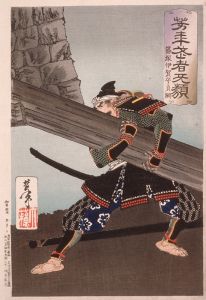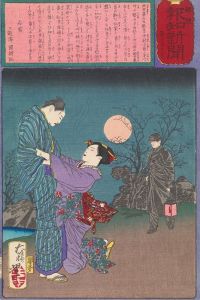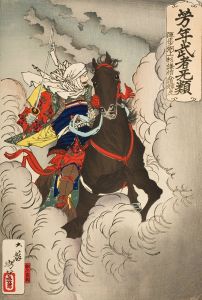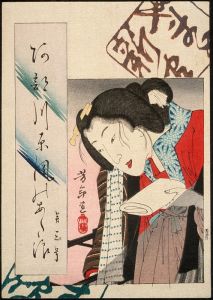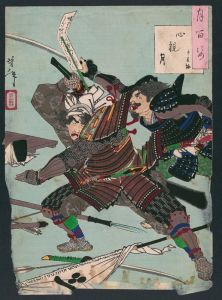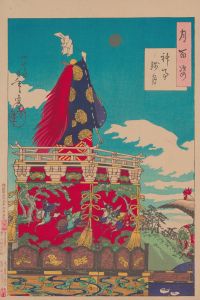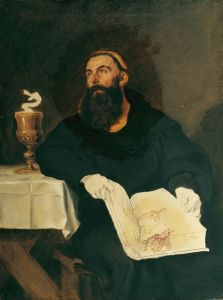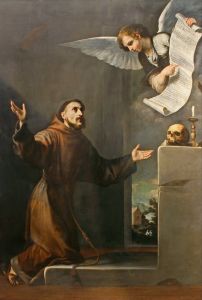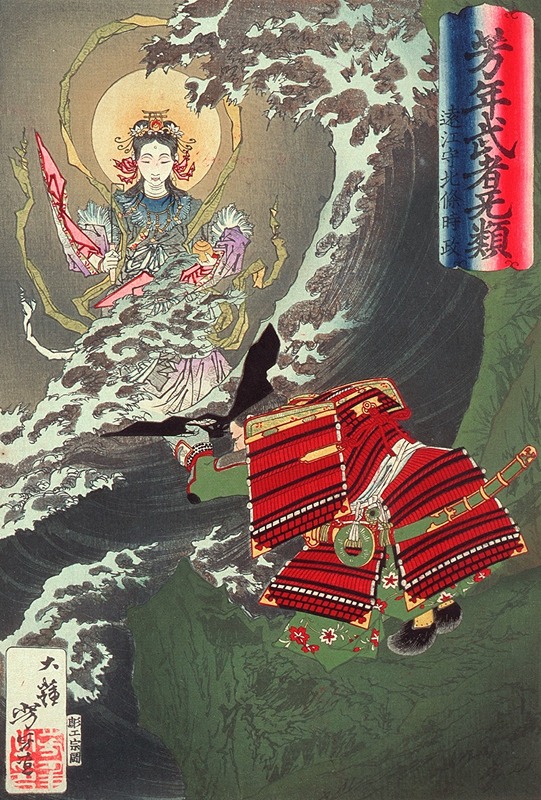
Hōjō Tokimasa of Tōtōmi Praying to Benzaiten
A hand-painted replica of Tsukioka Yoshitoshi’s masterpiece Hōjō Tokimasa of Tōtōmi Praying to Benzaiten, meticulously crafted by professional artists to capture the true essence of the original. Each piece is created with museum-quality canvas and rare mineral pigments, carefully painted by experienced artists with delicate brushstrokes and rich, layered colors to perfectly recreate the texture of the original artwork. Unlike machine-printed reproductions, this hand-painted version brings the painting to life, infused with the artist’s emotions and skill in every stroke. Whether for personal collection or home decoration, it instantly elevates the artistic atmosphere of any space.
Hōjō Tokimasa of Tōtōmi Praying to Benzaiten is a woodblock print created by the renowned Japanese artist Tsukioka Yoshitoshi (1839–1892). Yoshitoshi is widely regarded as one of the last great masters of the ukiyo-e tradition, which flourished during the Edo period and into the early Meiji era. This particular artwork is part of Yoshitoshi's celebrated series New Forms of Thirty-Six Ghosts (Shinkei Sanjūrokkaisen), which was published between 1889 and 1892. The series explores supernatural themes, drawing inspiration from Japanese folklore, historical events, and literary sources.
The print depicts Hōjō Tokimasa (1138–1215), a historical figure who played a pivotal role in the establishment of the Kamakura shogunate, the first military government of Japan. Tokimasa was the patriarch of the Hōjō clan, which became the dominant political force during the Kamakura period (1185–1333). In the artwork, Tokimasa is shown praying to Benzaiten, a Buddhist deity associated with water, music, and eloquence. Benzaiten is often depicted as a goddess of fortune and prosperity, and she is one of the Seven Lucky Gods (Shichifukujin) in Japanese mythology.
The scene is set on Enoshima, a small island near Kamakura that is closely associated with Benzaiten. According to legend, Tokimasa visited the island to seek the deity's blessings for his family's success and political ambitions. The print captures the moment of Tokimasa's devout prayer, emphasizing the spiritual and mystical atmosphere of the setting. Yoshitoshi's use of vivid colors, intricate details, and dramatic composition enhances the emotional impact of the scene, reflecting his mastery of the ukiyo-e style.
This artwork is significant not only for its artistic qualities but also for its historical and cultural references. It illustrates the interplay between religion, politics, and art in Japan during the late 19th century, a time when traditional values were being reexamined in the face of modernization and Western influence. As with many of Yoshitoshi's works, the print combines historical narrative with elements of the supernatural, offering viewers a glimpse into the rich tapestry of Japanese history and mythology.
Hōjō Tokimasa of Tōtōmi Praying to Benzaiten is an exemplary piece within Yoshitoshi's oeuvre, showcasing his ability to blend historical storytelling with imaginative artistry. It remains a valuable cultural artifact, reflecting the enduring legacy of the ukiyo-e tradition and its role in preserving Japan's historical and mythological heritage.





